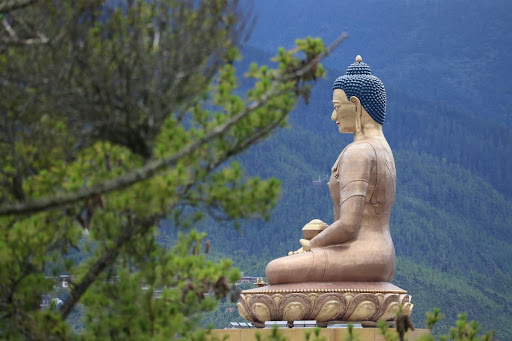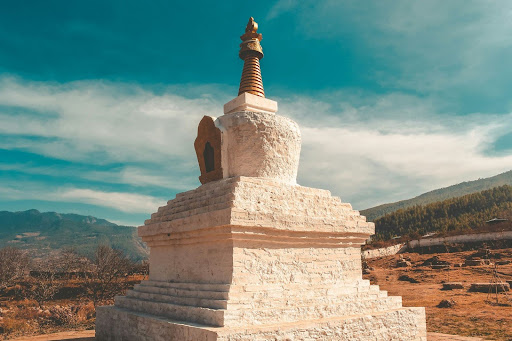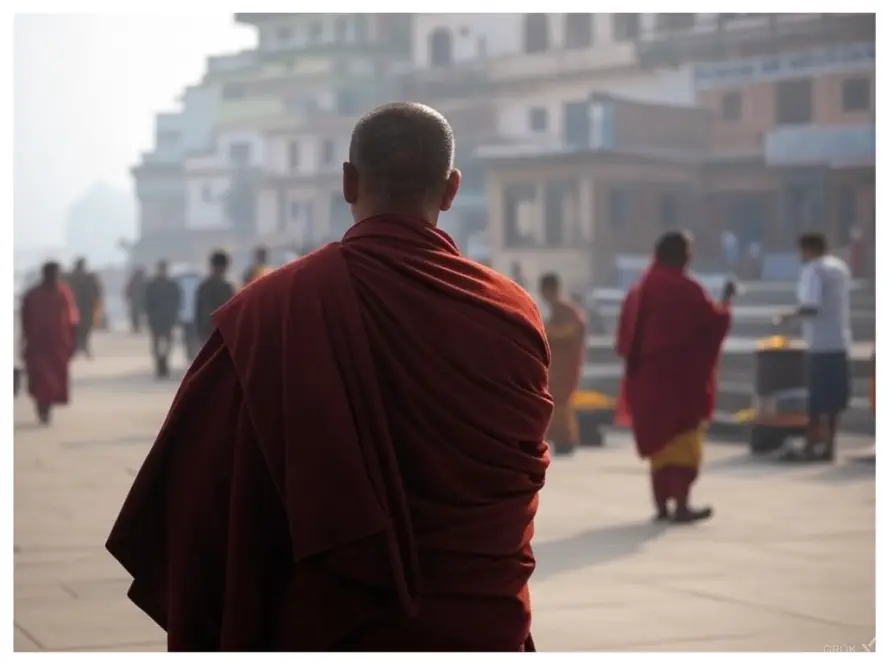Student – Lama la, my son recently placed a Buddha statue in his living room. He tells me that he doesn’t see it as ornament, but as a reminder of the Buddha’s qualities and that he lights a tea candle before it every day. Personally, I feel that it should not be in the living room, but on an altar, and this issue has become the subject of a heated debate in the family. Lama, what is your opinion on this issue? Also, how should we respect sacred symbols and music? Thank you la.
Master – Situations are never black and white, and it’s important to avoid considering our opinions as universal laws. Why is this so? Well, everything exists merely due to a number of components joining together, and there are no permanent, truly existing objects or concepts.
Cappuccino appears when ground coffee beans, hot water, and milk-froth combine, while opinions are the amalgamation of educational backgrounds, cultural influences, and life-experiences. If any of these components are missing, the object or concept ceases to exist. Scoop away frothed milk from a coffee and the cappuccino has gone. Offer a person new information or place them in a different environment and opinions change.
As a simple example of this, think of a diamond. To someone raised in a city, it is a valuable and coveted item. To a hermit in the mountains or an indigenous person in the Amazon jungle, it is nothing more than a useless, shiny pebble. In short, its value is based purely on our socially-influenced view and is not intrinsic to the object itself. This is not only true for a gem stone, but for all objects. Cow dung in Thimphu is considered useless and dirty, whereas in rural Kurtue village it is a valuable substance used to light a bukhari/ stove.

Practically, what does this mean in the context of your question? Well, you should understand that your opinion does not represent an ultimate view, but is merely the result of your educational background and life experiences. As a Buddhist raised in the Himalayan region, for example, you may oppose tattoos, whereas in Thailand they are considered a sacred form of Buddhist art. Values are relative, and only a person’s motivation is a true benchmark of respect.
To make this point, Patrul Rinpoche told the following tale: “There once was a man who found a clay tsa-tsa statue at the side of the road. ‘If it stays there,’ he thought, ‘the rain will ruin it; I’d better do something about it.’ So, he covered it with an old leather shoe sole that had been left lying nearby. Another person passing the same spot thought to himself, ‘It’s not right to have an old shoe sole covering that tsa-tsa,’ and so he took it off. As the fruit of their good intentions, both the one who covered the tsa-tsa and the one who removed the covering attained enlightenment in a future life.”
So, should we never criticise others’ acts? No, we can, definitely, but we should be aware that our opinions are just that – our opinions and not ultimate facts. If we believe that our opinions are definitive viewpoints, then we are feeding an extreme dualistic view that there is a truly existing concept of right and wrong, and good and bad, and this is the root cause of conflicts and the creator of samsara. Dzongsar Khyentse Rinpoche has made this point: “The fundamental cause of violence is when one is fixated on an extreme idea, such as justice or morality. This fixation usually stems from a habit of buying into dualistic views, such as bad and good, ugly and beautiful, moral and immoral. Understanding that all these views or values are compounded and impermanent, as is the person who holds them, violence is averted.”

With regard to Dharma, the essential teachings taught by the Buddha can never be changed or modified. However, teaching methods and expressions of practice can be adapted to preserve the vitality of the Dharma and to keep the teachings relevant to the times. In fact, failing to do this is a betrayal of the Dharma, causing it to be rendered nothing more than a cultural activity or a superstition.
I’ll relate a story: ‘There was once a country where people forgot how to laugh, and so many masters were invited to teach on the subject. They demonstrated the movement of people’s mouths when we laugh and even imitated its sound. A few people laughed, but the majority just sat there, silently taking notes. Then, one day, an unorthodox master came. He acted in a strange way and talked nonsense. Some people felt that he was not showing respect to the serious nature of the subject and left. Finally, however, his funny and crazy antics paid off and people burst out laughing. They got it. The story emphasises that the sole aim of the Dharma is to wake us up to the truth, not to rigidly uphold certain teaching styles.
In reality, there are 84,000 methods that lead to the truth, all of which can be compared to boats. Now, as long as the vessels function to get us across the river, then it is irrelevant whether they are simple, complicated, red, blue, or green. As Sangay Nyenpa Rinpoche says, religion (the boat) is not important. Wisdom (the journey) is important.

With regard to Dharma, the essential teachings taught by the Buddha can never be changed or modified. However, teaching methods and expressions of practice can be adapted to preserve the vitality of the Dharma and to keep the teachings relevant to the times. In fact, failing to do this is a betrayal of the Dharma, causing it to be rendered nothing more than a cultural activity or a superstition.
I’ll relate a story: ‘There was once a country where people forgot how to laugh, and so many masters were invited to teach on the subject. They demonstrated the movement of people’s mouths when we laugh and even imitated its sound. A few people laughed, but the majority just sat there, silently taking notes. Then, one day, an unorthodox master came. He acted in a strange way and talked nonsense. Some people felt that he was not showing respect to the serious nature of the subject and left. Finally, however, his funny and crazy antics paid off and people burst out laughing. They got it. The story emphasises that the sole aim of the Dharma is to wake us up to the truth, not to rigidly uphold certain teaching styles.
In reality, there are 84,000 methods that lead to the truth, all of which can be compared to boats. Now, as long as the vessels function to get us across the river, then it is irrelevant whether they are simple, complicated, red, blue, or green. As Sangay Nyenpa Rinpoche says, religion (the boat) is not important. Wisdom (the journey) is important.



